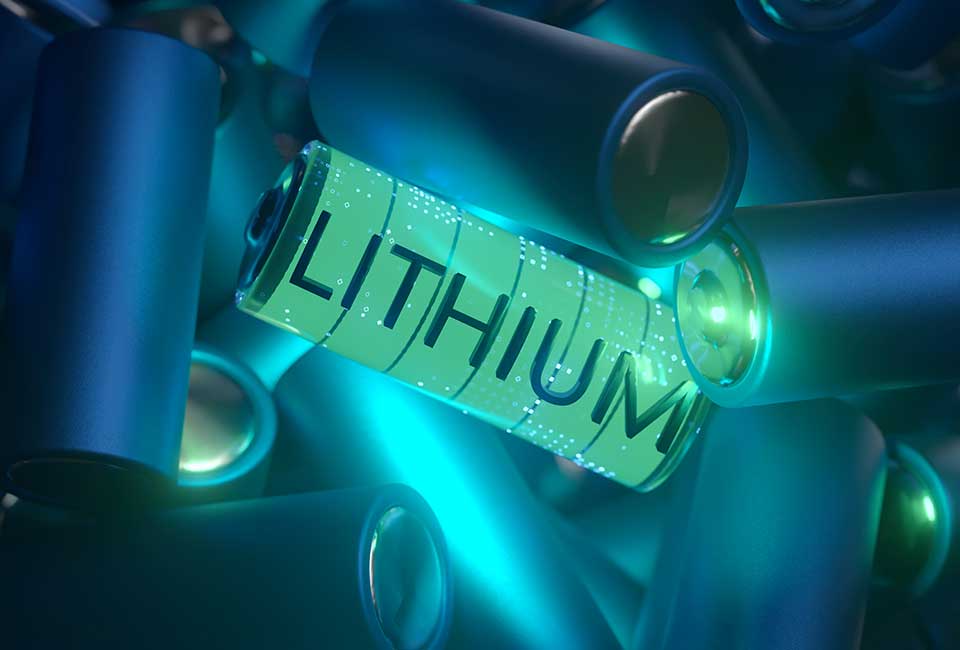
Used lithium-ion batteries are to be recycled in a way that conserves resources. Empa and Kyburz Switzerland AG have developed a pilot plant for this purpose so that the materials can be recovered in as pure a form as possible.
Everyone is familiar with the phenomenon from their cell phone or laptop: over time, the capacity of the battery decreases so that you have to reach for the charging cable more and more often. The same applies to the much larger batteries in electric vehicles: although vehicle manufacturers can now guarantee a service life of eight to ten years for lithium-ion batteries in electric vehicles, sooner or later they too will have to be recycled. In a project supported by the Swiss Federal Office of Energy (SFOE), the Swiss electric vehicle manufacturer Kyburz Switzerland AG and Empa have set themselves the goal of recycling discarded batteries from electric vehicles. With the support of Empa, Kyburz has developed a recycling plant that breaks down old batteries into their components.
«Multi-Life» concept aims to reduce demand for primary raw materials
However, before a battery ends up in the recycling plant, it can be given a second, sometimes even a third life. After its first use, a battery can still be used in «second-life» vehicles that are powered by batteries that have already been used. If the capacity of the battery continues to fall, this does not necessarily have to be the end. Batteries with reduced capacity could be installed in stationary applications for storing solar energy, for example. This «multi-life» concept should significantly reduce the demand for primary raw materials in the future.
With direct recycling, only disassemble the battery as far as necessary
If the capacity of the battery is no longer sufficient for this further use, it is finally sent to the recycling plant. «In this type of battery, the cathode, separator and anode are installed in several layers in a plastic housing», explains Empa researcher Andrin Büchel from the «Technology and Society» department. By cleverly unrolling the separator, the cathodes and the anodes - metal foils coated with particles to store lithium ions - are sorted into two separate containers. The electrode materials are then recovered. The cathode, an aluminum foil coated with lithium iron phosphate particles, is placed in a water bath, where the particles detach from the foil and are recovered as powder after decanting and drying. The same procedure is used for the anode, which consists of a copper foil coated with graphite particles. In this case, however, a homogeneous suspension is produced, which requires an extra step in a centrifuge to separate the particles. «At the end of the recycling process, we get back the housing, the separator, the aluminum and copper foils as well as the electrode materials sorted by type», says Büchel. This type of recycling process is known as direct recycling. «In direct recycling, the battery is only dismantled to the extent necessary to retain the functional properties of the materials. This allows us to minimize the number of work steps required, including for further processing», says Büchel.
The ultimate goal is to build new batteries from recycled material
But the work is not yet done with the recovery of the materials. They have to be regenerated so that they can be used again in a new battery. Büchel and his Empa colleague Edouard Quérel are currently working on precisely this across departments. In the battery laboratory of the «Materials for Energy Conversion» department, they have already uncovered the mechanism behind the ageing of the cathode material. «The lithium iron phosphate has a crystalline structure that releases and reabsorbs lithium ions during each charging and discharging cycle», explains Büchel. «This structure remains intact, but the amount of active lithium ions decreases over time». The researchers are currently working on «refreshing» the cathode material by adding lithium in a targeted manner. The ultimate goal is to use the recycled material to build new batteries that are as efficient as possible and close the cycle.
Conventional recycling processes are less resource-efficient
In conventional recycling processes, batteries are shredded and the recyclable materials are separated using thermal and wet-chemical processes. In comparison, direct recycling is said to be more resource-efficient as it consumes less energy and does not use any chemicals. However, the process developed by Kyburz and Empa is currently only suitable for the specific design and cell chemistry of the batteries used in Kyburz vehicles, among others. «We are currently investigating whether and how this process can also be transferred to other cell types as part of the Innosuisse project ‹CircuBAT›, in which 23 other partner companies are involved in addition to Kyburz», says Büchel.